Garden of Memories
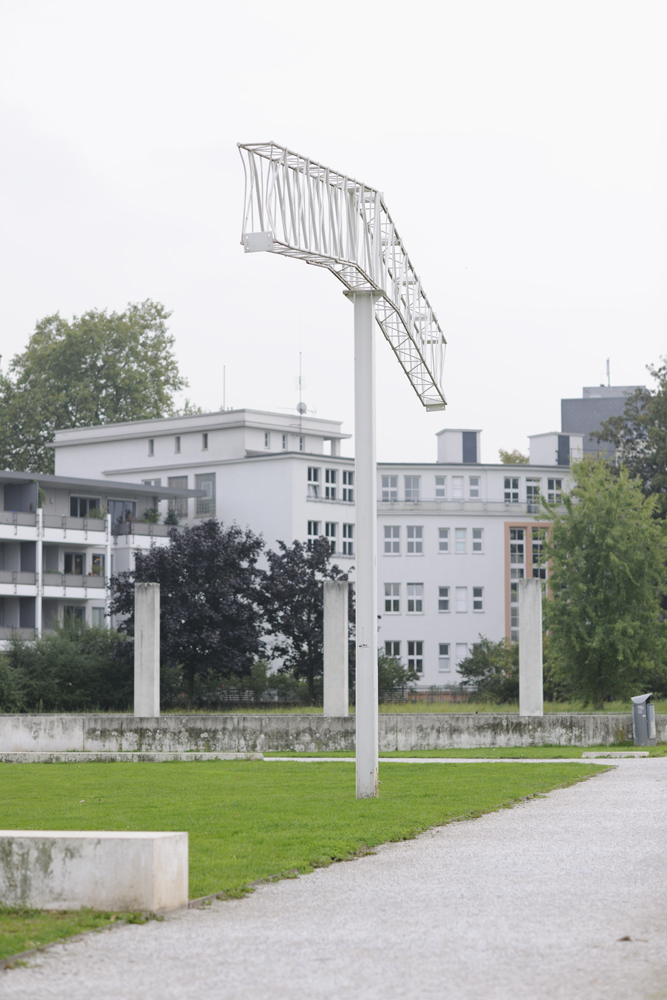

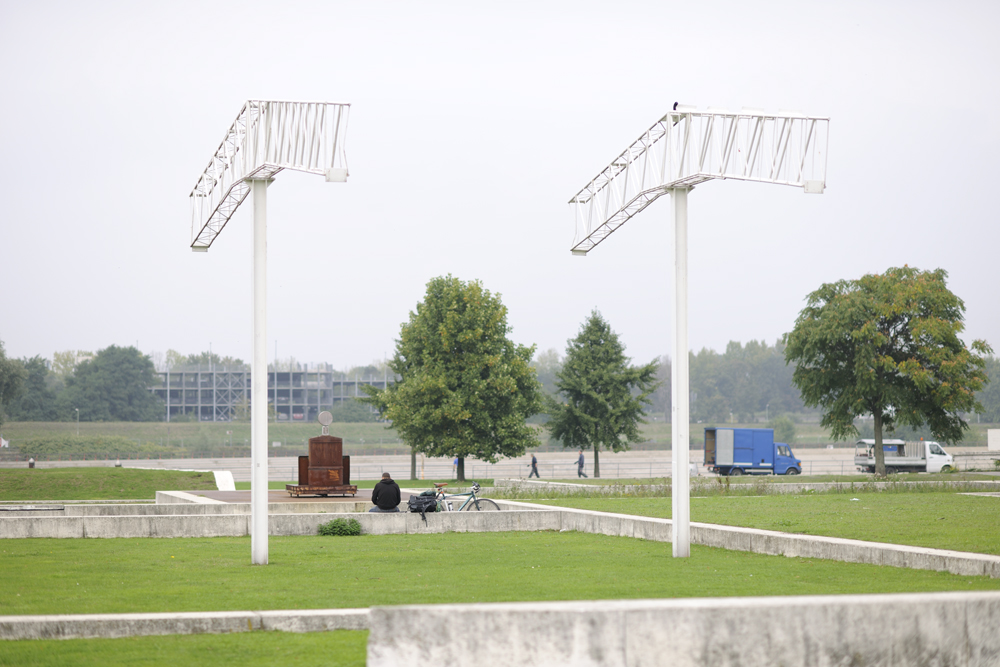

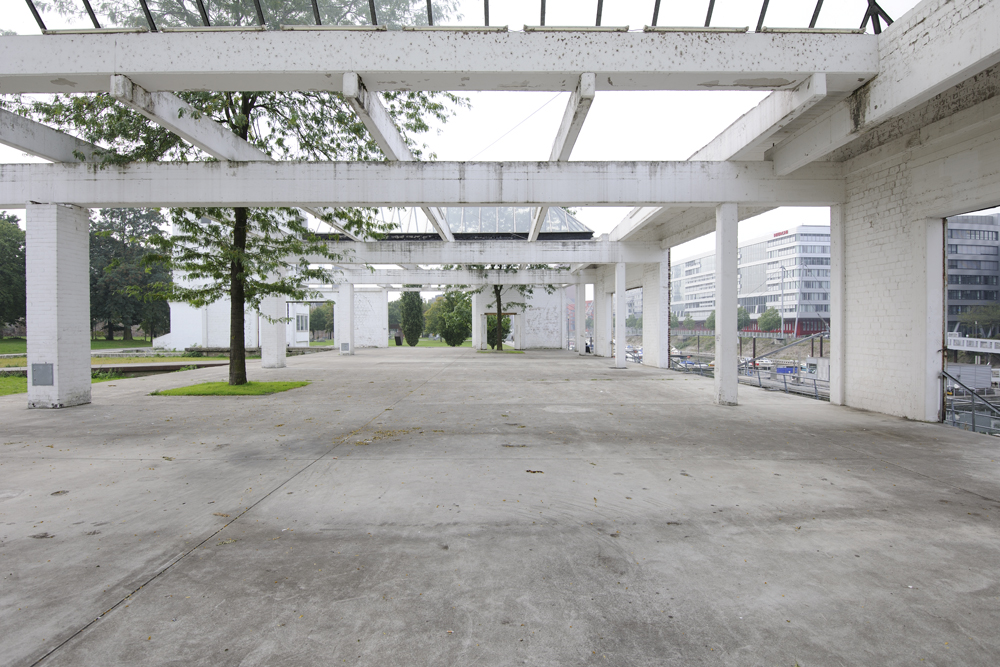

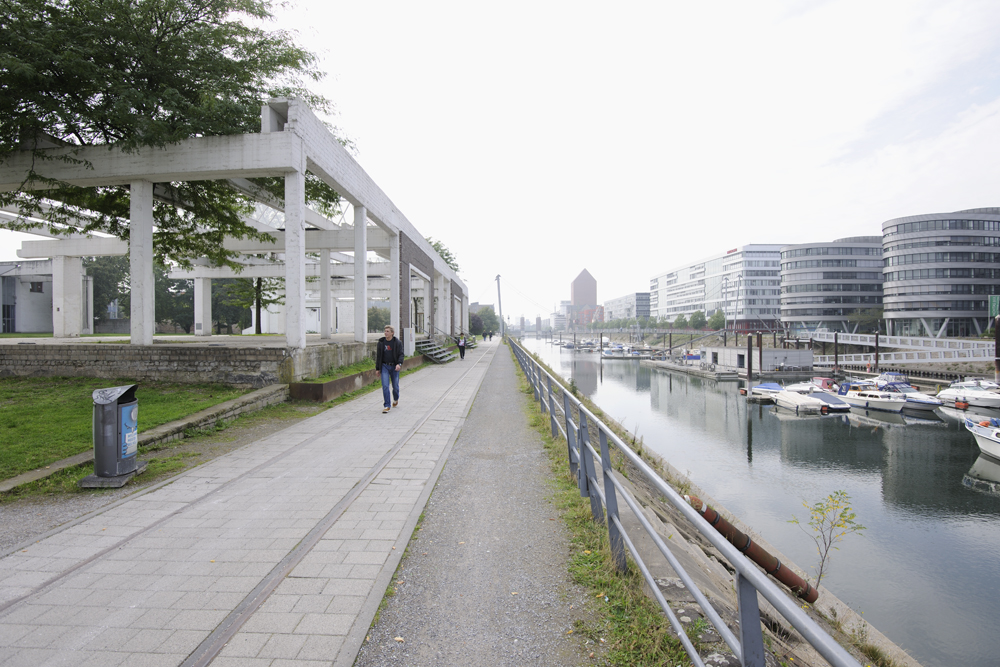
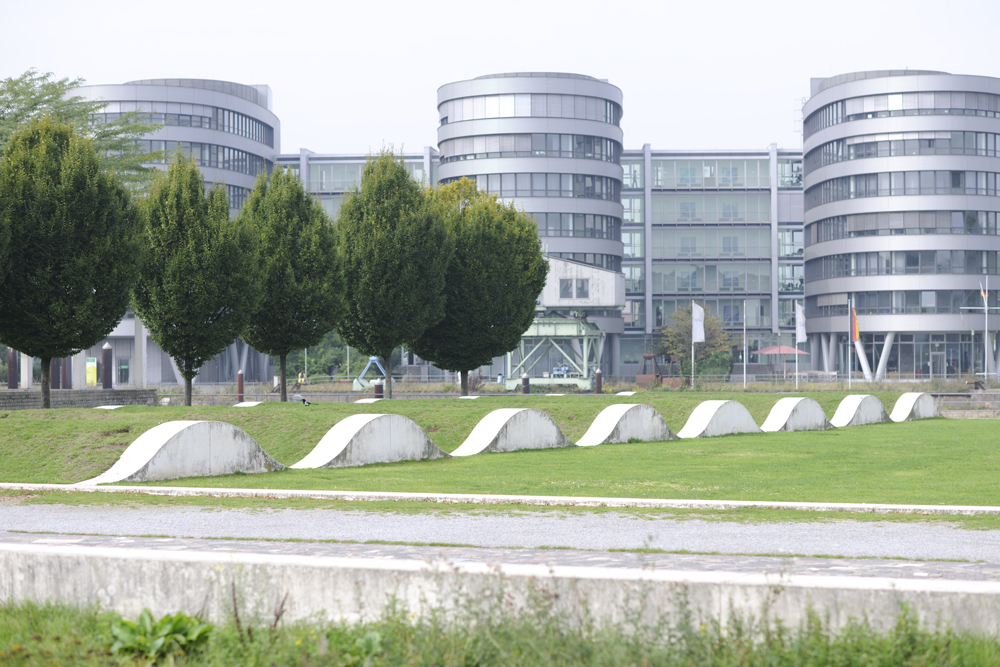



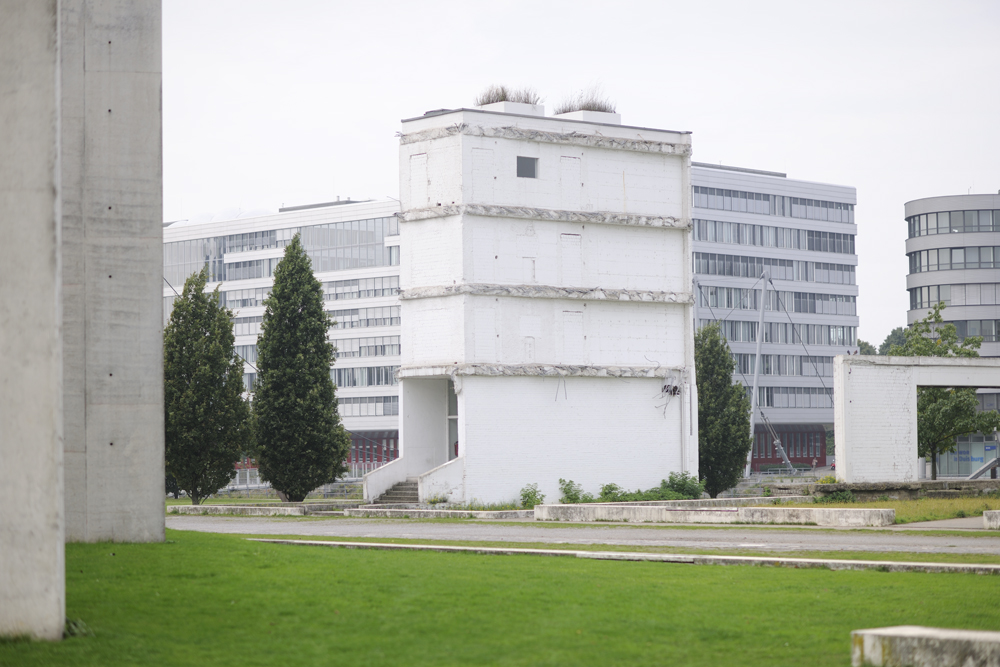


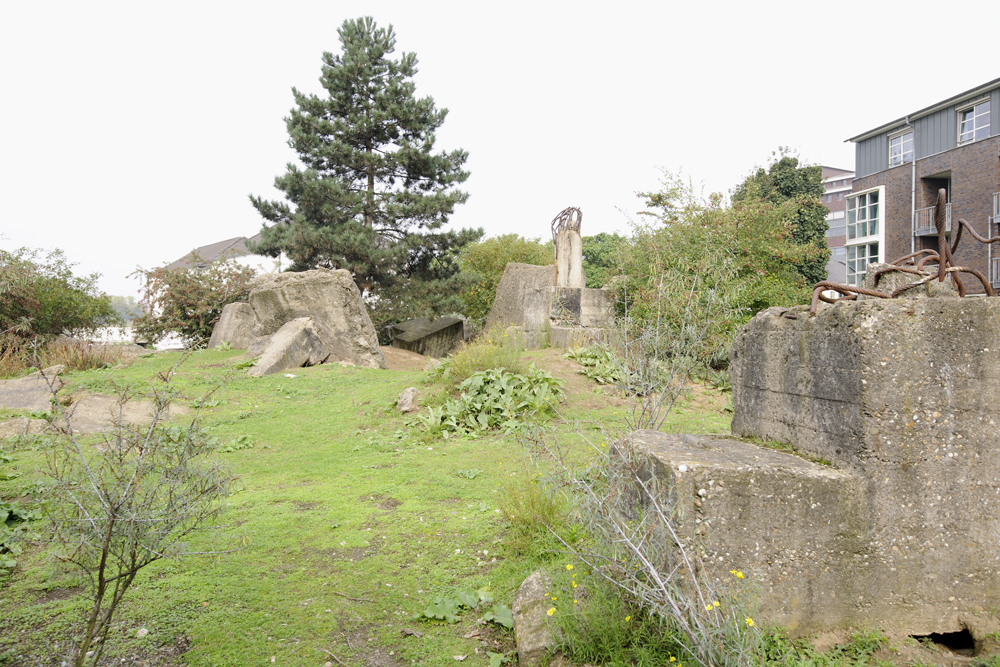
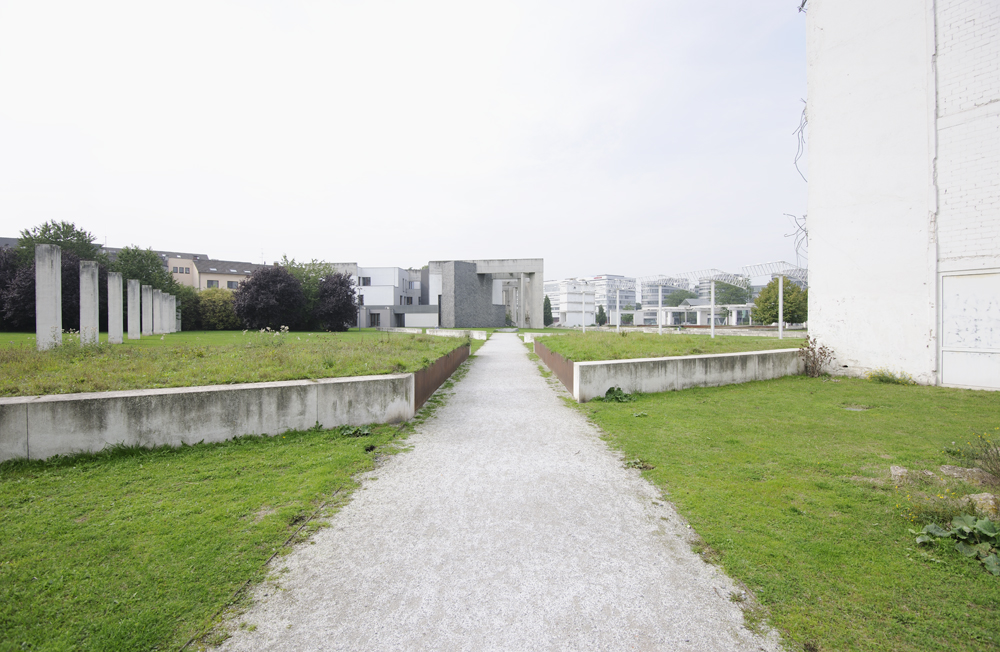
As part of the Internationale Bauausstellung (IBA) Emscher Park (1989-1999), Israeli artist Dani Karavan redesigned an approximately three-hectare former industrial site. He named the site the Garden of Memories. The park was built in the years from 1996 to 1999, primarily using the remains of preexisting buildings to create the most extensive work done by an international artist in Germany thus far. Karavan’s work brings together sculpture, installation, and landscape design in a way that can be best described as environmental art. He always uses the history of a location as his starting point, and then makes it possible for viewers to experience it, while also creating something useful.
In the Garden of Memories, the remains of former buildings were left in place to be used as event venues or observation towers. The floor plans of the demolished buildings were outlined with white concrete bands that help structure the park and can also be used as benches. The path that leads through the center of the park was paved with rubble like a mosaic. In other locations, the rubble has been piled into a mound or assembled as a rock garden. The artist also incorporated plants that make reference to the history of the location. The inner harbor functioned as an important grain-trading center (“the bread basket of the Ruhrgebiet”), which is symbolized with grain and sunflower fields, as well as the installation of a scale in the middle of the park.
The design is largely concerned with transforming the historic elements for contemporary cultural and recreational use. For example, art events could take place in the Ludwiv tower, or the platform of a warehouse is well suited to dance and music, as well as other outdoor events. It is also important that the grounds remain open to the water and the surrounding buildings, including the Haus des Gewerkschaftsbundes (Kardinal-Galen-Straße), the printing works of the former lithographic printing office Steinkamp, the Jewish community center (corner of Springwall), as well as Duisburg’s medieval city wall with the Koblenzer Tor. At night, the park is illuminated by an installation by the lighting designers Belzner und Hofmann.
Additional information:
http://de.wikipedia.org/wiki/Garten_der_Erinnerung
http://www.route-industriekultur.de/themenrouten/01-duisburg-stadt-und-hafen/garten-der-erinnerung.html
http://www.eghn.org/etcg-erinnerung-garten.html
Further reading:
Public Art Ruhr. Die Metropole Ruhr und die Kunst im öffentlichen Raum. Eds. Walter Smerling and Ferdinand Ulrich on behalf of the RuhrKunstMuseen, Cologne 2012, ISBN 978-3-8632-134-0, pp. 78–79.
Dani Karavan
← Zur Startseite
Duisburg, Philosophenweg
